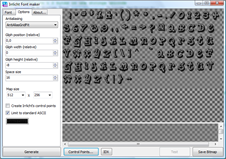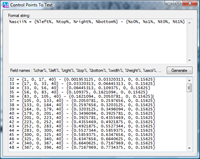Font rendering and the joys of C++
Wednesday, October 21st, 2009At the moment, all the menu text in the game is stored in separated images – one for every menu item. For example, this is the “New Game” button:

Of course, storing each menu item as a separate picture is not very efficient, so I decided to add text rendering capability to the game.
My first choice was the OGLFT library. It’s a really easy to use and complete OpenGL text rendering library based on FreeType. I quickly added it to the project, and it worked perfectly, until I closed the application and got a nice “Access violation” exception 🙁
After hours of tinkering, I finally found out that the error was related to the FreeType library. For some mysterious reason, just trying to open a font file with FreeType caused the erroneous behavior.
So, since I couldn’t use FreeType, I decided to create a text rendering class myself, based on the font texture approach.
In order to create suitable font maps, I modified Irrlicht Font Maker to create non-irrlicht-specific font maps. I also added a couple of options and the ability to export the control points as custom text or in a handy binary format:
But that’s only the first part of the story: once ready, I took my new text rendering class for a test drive and, with much surprise, I discovered that the program triggered the same exception it did before! OH MY!
After an hour or so of debugging, I finally found out the root cause of the problem: a single call to fopen to read the font control points was enough to send the program to C++ hell.
I have since replaced all the standard C file IO functions (fopen, fread, …) with the modern C++ equivalent (fstream) and now the program ends with no errors.
In the end, I’m happy with the new font rendering method, as it gave me a chance to clean up and improve Irrlicht Font Maker, however once again I feel like I misplaced my foot in the minefield that is programming in C++ 🙂

